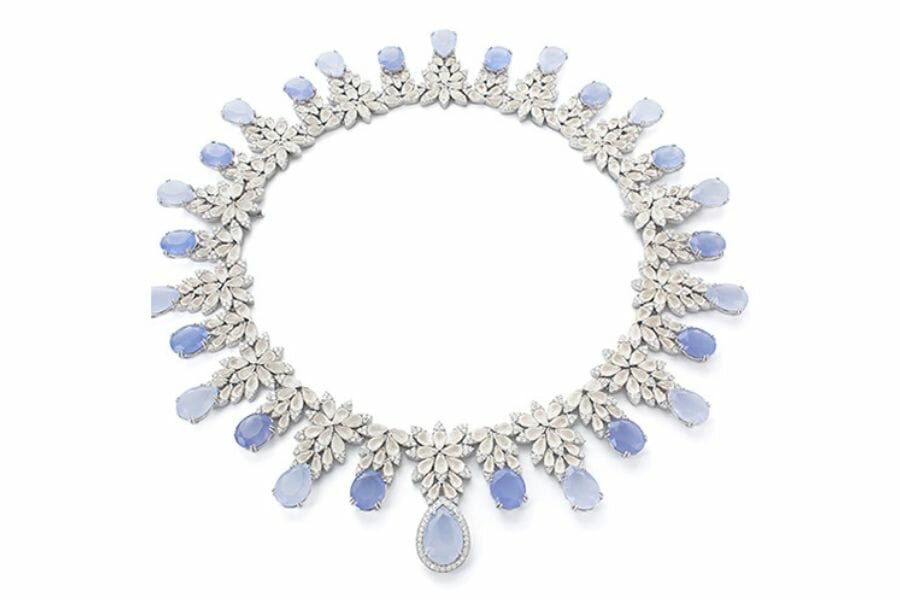Are you familiar with the magical gemstone called chalcedony? If not, get ready to be dazzled by its beauty and intrigued by its worth. Since ancient times, people have been drawn to chalcedony because of its attractive colors and silky texture.
In this article, we’ll examine this intriguing gemstone’s value, cost, and worth and delve into the factors that contribute to its enduring appeal.
Chalcedony has a value that transcends its cost on a monetary level. Although it may not be as expensive as some of its more glamorous gemstone cousins, chalcedony holds a unique charm that is impossible to describe.
Its soft tones range from warm yellows and whites to delicate blues and lavenders, making it a flexible gemstone with any style or situation.
Its price is simply one aspect of its value; another is its eternal charm and extensive past. Join us on this adventure as we explore the fascinating world of chalcedony and uncover its secrets!
What Chalcedony Is
The fascinating gemstone chalcedony is a member of the quartz family. Because it’s a cryptocrystalline silica variation, its microcrystalline structure comprises tiny crystals invisible to the unaided eye. Chalcedony is renowned for its lustrous surface and vast spectrum of exquisite hues, including blue, pink, purple, white, and varied yellow tones.
Blue Chalcedony
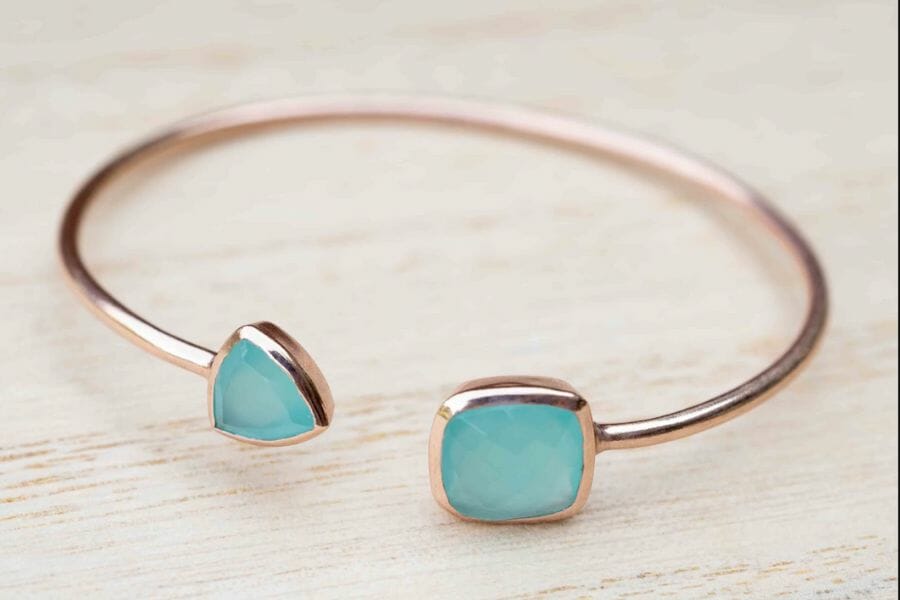
Photo provided by and available for purchase at ByCilaJewelry
Blue chalcedony is a quartz gemstone with a soothing blue color. Its coloration can be attributed to trace amounts of minerals, such as copper or manganese, present during its formation. These impurities interact with the crystal lattice structure, producing a blue hue.
The intensity of the blue can vary, ranging from pale and translucent to deep and vibrant. Blue chalcedony’s gentle and serene color adds to its allure, making it a popular choice in jewelry and ornamental pieces.
How much is Blue Chalcedony worth
Blue chalcedony can range from around $1 to $20 per carat. However, remember that this is a rough estimate, and prices fluctuate. High-quality blue chalcedony with intense color saturation and excellent clarity may command a higher price per carat, while lower-quality or less desirable specimens may be priced lower.
Green Chalcedony
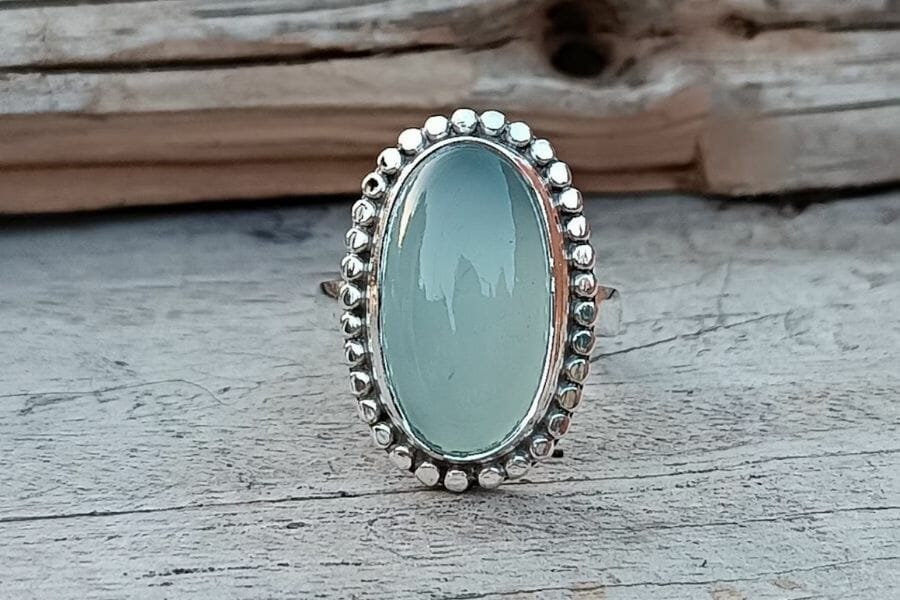
Photo provided by and available for purchase at PendantPlaceShop
Green chalcedony is a variety of chalcedony gemstones that showcases a lovely green color. Microscopic inclusions of minerals such as chlorite or other trace elements typically cause the green hue in chalcedony. These inclusions interact with the crystal structure, imparting a distinctive green shade.
The intensity and tone of green can vary, ranging from pale and translucent to deep and vibrant. Green chalcedony’s green color adds a touch of freshness and natural beauty, making it a sought-after gemstone for jewelry and decorative purposes.
How much is Green Chalcedony worth
Green Chalcedony can cost anywhere from $2 and $30 per carat on average. It’s crucial to remember that these are only broad estimates and that costs may change.
Pink Chalcedony
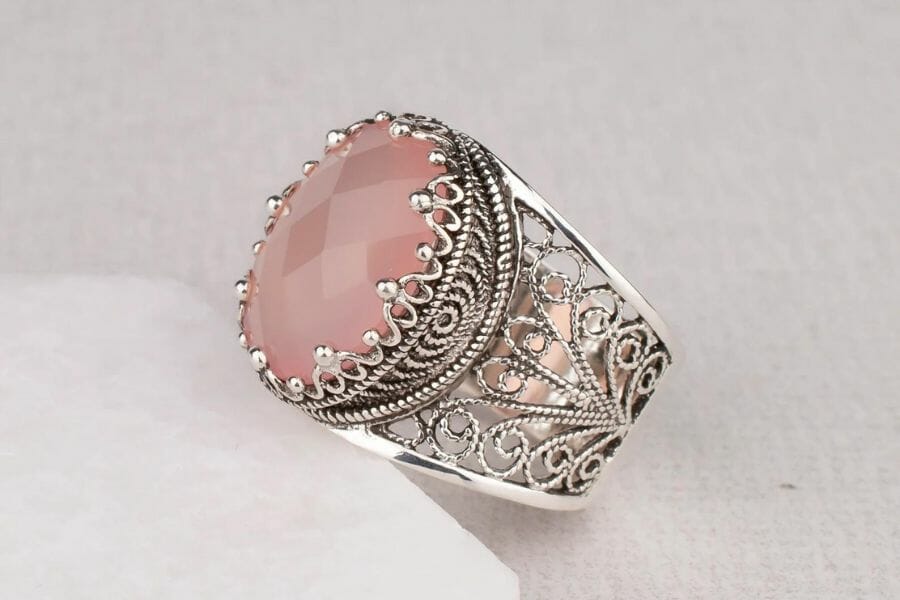
Pink chalcedony is a captivating variety of chalcedony gemstone that exhibits a delicate pink color. The pink hue in chalcedony is typically the result of microscopic inclusions of minerals such as manganese or iron. These inclusions interact with the crystal structure, lending the stone its distinct pink shade.
Pink can range in intensity and saturation from light and pastel tones to more intense tones. Pink chalcedony’s soft and romantic color makes it a popular choice for jewelry, offering a feminine and elegant touch to any design.
How much is Pink Chalcedony worth
On average, pink chalcedony can be purchased for between $2 to $25 per carat. It’s important to remember that these are merely ballpark figures and that prices may vary.
Purple Chalcedony
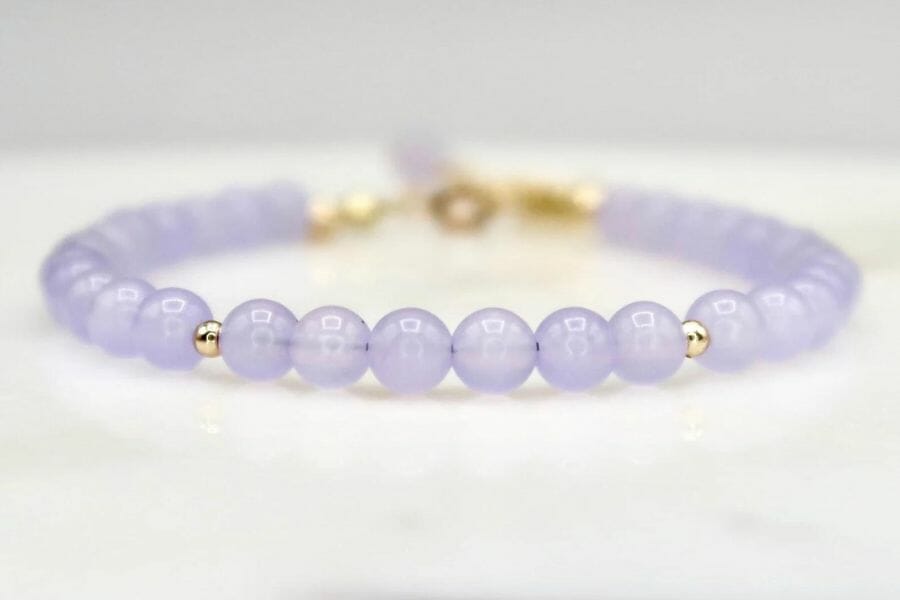
Chalcedony’s purple color is frequently brought on by trace elements like manganese or iron in its composition. The purple hue results from these substances’ interactions with the crystal lattice.
Purple comes in shades, from light lavender to rich, deep colors. Purple chalcedony is a sought-after gemstone for jewelry and ornamental applications because of its seductive color, which lends a touch of elegance and charm.
How much is Purple Chalcedony worth
The typical price range for purple chalcedony is $3 to $30 per carat. It’s critical to remember that these are only rough estimates and that actual costs may differ.
White Chalcedony
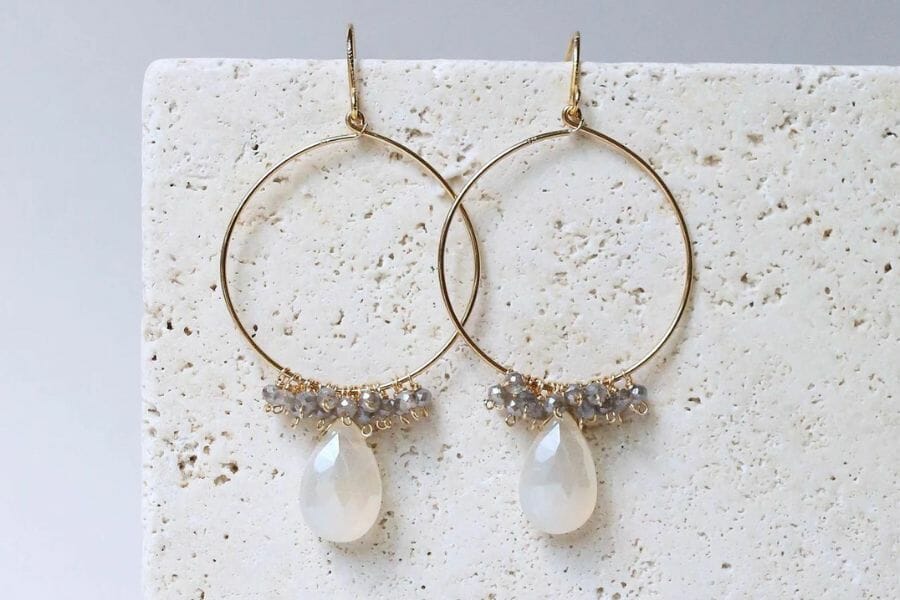
A white chalcedony is a captivating form of chalcedony gemstone that exhibits a pure and luminous white color. The white color of chalcedony results from its composition and the absence of any significant impurities or trace elements.
Its cryptocrystalline structure allows light to pass through the stone, making it translucent and ethereal. White chalcedony’s pristine and elegant color makes it a versatile gemstone that complements various jewelry styles, adding a touch of sophistication and timeless beauty.
How much is White Chalcedony worth
White Chalcedony typically costs between $1 and $15 per carat. It’s important to remember that these are broad estimates, and final expenses could vary.
Why Chalcedony Is So Expensive
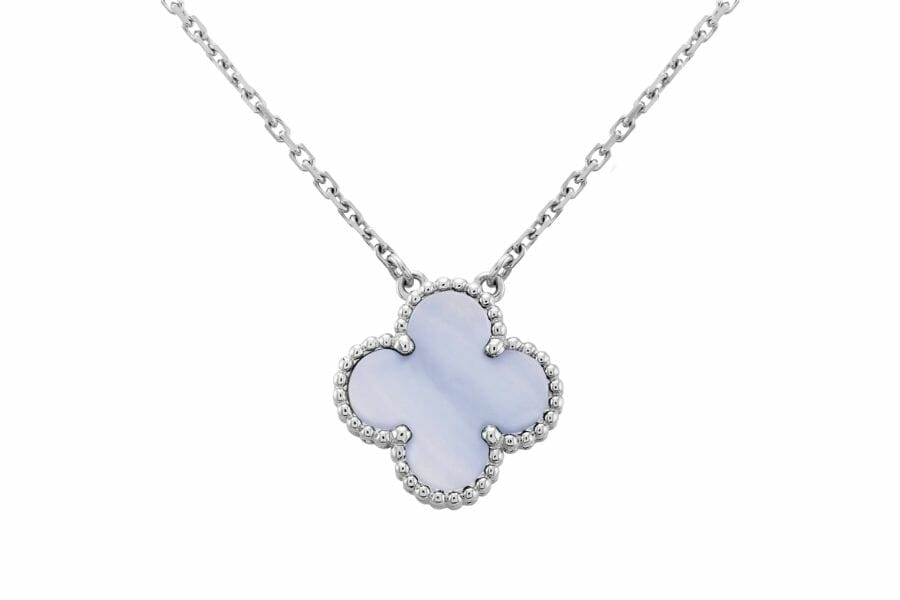
Chalcedony exhibits various colors and fascinating patterns, making each stone unique and visually intriguing. From soft blues and pinks to vibrant oranges and yellows, chalcedony offers various hues to suit different tastes and preferences. Its distinctive patterns, such as banding or agate-like formations, provide an additional element of attraction.
Because chalcedony is a hard stone, it’s perfect for jewelry that can survive regular use. Its durability and resistance to scratches, owners can enjoy its beauty for a very long time. Chalcedony may also be cut and polished into various shapes and forms, giving jewelry designers endless creative freedom to create stunning creations.
Chalcedony has a long history and has held cultural significance throughout various civilizations. It has been included in antique jewelry, amulets, and talismans to bring protection and improve communication. Because of this historical and cultural significance, it’s more desirable and valuable to collectors and enthusiasts.
Although chalcedony is relatively abundant, certain varieties, such as high-quality specimens or those with unique colors and patterns, can be rarer. These exceptional chalcedony stones command a higher value due to their scarcity in the market.
How To Determine The Value Of Chalcedony
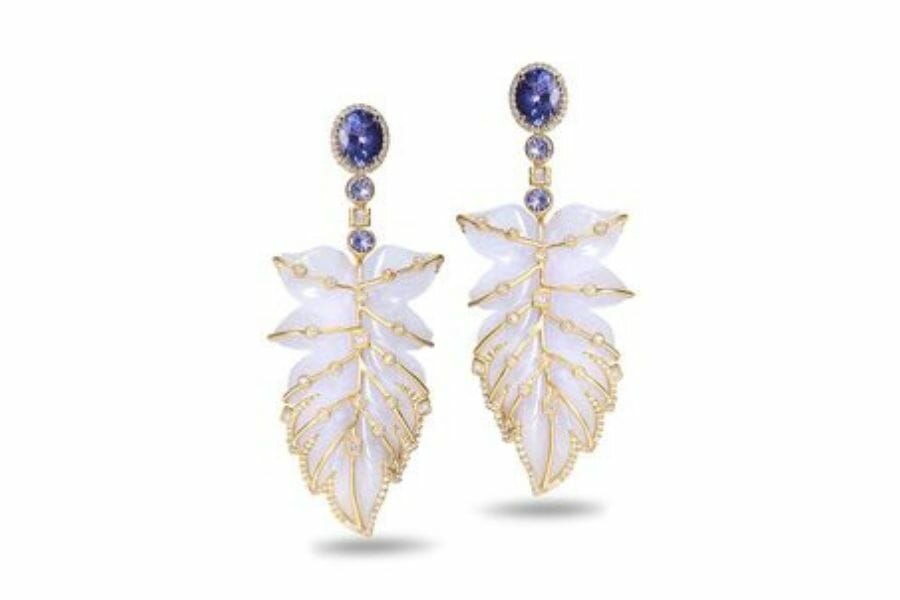
There are many various aspects to take into account when estimating chalcedony’s value, including the following:
Quality
The overall quality of the chalcedony, including factors such as color, clarity, and transparency, plays a significant role in determining its price. Chalcedony with vibrant, intense colors, excellent clarity, and high transparency is generally valued more.
Size and Carat Weight
The size and carat weight of the chalcedony can influence its price. Larger, heavier pieces of chalcedony are typically priced higher due to the increased material and the rarity of finding larger specimens.
Origin and Rarity
Chalcedony from certain locations or with specific characteristics may be rarer, making it more desirable and valuable. Origin can also play a role in the price, with chalcedony from specific regions or mines commanding higher prices due to their reputation for producing exceptional quality stones.
Cut and Craftsmanship
The cut and craftsmanship of the chalcedony also contribute to its value. Skillful cutting techniques that enhance the stone’s beauty maximize its color and light performance, and create unique shapes or facets can add value to the chalcedony.
Market Demand
The current demand and market trends for chalcedony can impact its price. If chalcedony is in high demand due to fashion trends or popularity, its price may increase. Conversely, if the market demand is low, prices may be more competitive.
These factors work in conjunction to determine the price of the chalcedony, and it’s advisable to consult with reputable gemstone dealers or jewelers to obtain accurate and up-to-date pricing information based on the specific characteristics of the chalcedony you are interested in.
Chalcedony Price By Type
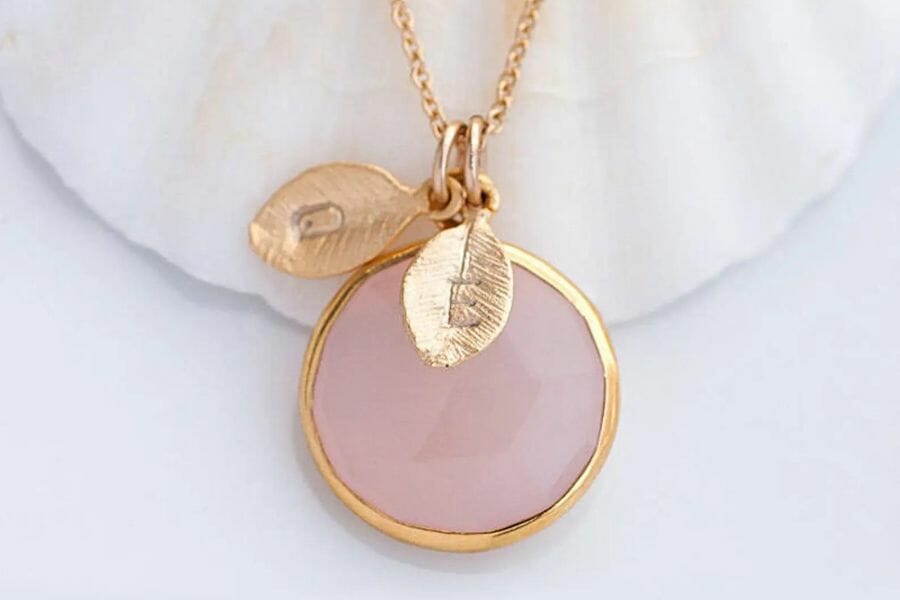
One may estimate the worth and cost of chalcedony by being aware of the factors. Here’s a list of the most popular chalcedony colors with their prices.
Chalcedony values by color
| Color | Location | Price (Per Carat) |
| Blue Chalcedony | Any | $1 – $20 |
| Green Chalcedony | Any | $2 – $30 |
| Pink Chalcedony | Any | $2 – $25 |
| Purple Chalcedony | Any | $3 – $30 |
| White Chalcedony | Any | $1 – $15 |
Chalcedony pricing by unit of measurement
Several chalcedonies are very different in terms of price and worth. Let’s calculate the cost of more units of chalcedony.
| Measurement | Price |
| A carat of chalcedony | $1 to $30 |
| A gram of chalcedony | $5 to $150 |
| An ounce of chalcedony | $140 to $4,250 |
| A kilogram of chalcedony | $5,000 to $150,000 |
| A pound of chalcedony | $2,270 to $68,040 |
| A ton of chalcedony | $4,535,925 to $136,077,750 |
How To Get An Appraisal On Your Chalcedony
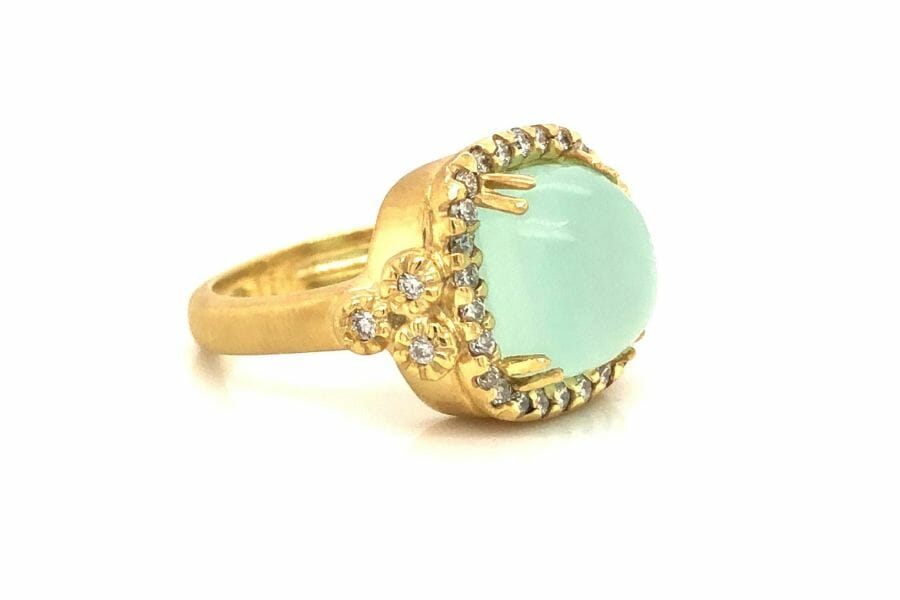
There are a few factors to consider to obtain an accurate and realistic assessment of your chalcedony.
Look for a certified gemologist or a professional gemstone appraiser with expertise in evaluating and appraising chalcedony. Check their credentials and reputation to ensure they have the necessary knowledge and experience. Choose an appraiser qualified and certified by reputable organizations, such as the American Gem Society (AGS).
Contact the appraiser to schedule an appointment. It’s a good idea to discuss your specific needs and the purpose of the appraisal beforehand, whether it’s for insurance purposes, selling, or personal knowledge.
Prepare relevant information about the chalcedony, such as its origin, size, color, and any accompanying documentation like certificates or invoices. This information will help the appraiser evaluate the stone accurately.
Take the chalcedony to the appraiser’s office for an in-person evaluation. The appraiser will examine the stone’s characteristics, including color, clarity, cut, and overall condition. They may use specialized tools and equipment to assess the chalcedony’s quality.
After the evaluation, the appraiser will provide you with an appraisal report detailing the assessed value of the chalcedony. The report should include information about the stone, its characteristics, and the appraised value. Reviewing the report carefully and asking any questions you may have is essential.
Remember, the cost of an appraisal can vary depending on the appraiser, the evaluation’s complexity, and the appraisal’s purpose. It’s recommended to inquire about the fees upfront and ensure that the appraiser follows recognized industry standards for gemstone appraisals.

